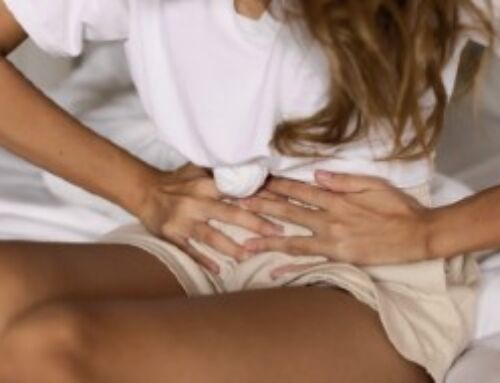Women need access to care they deserve for mid-urethral sling complications by doctors who can provide both complete mesh removal and partial mesh mesh removal.
“For women requesting mid-urethral sling (retropubic sling) excision, an open or laparoscopic approach can be employed to dissect out the retropubic arms. The latter provides a superior view of the retropubic space and confers potential advantages of quicker recovery and better cosmesis” …Dr. John Heathcote, Oxford University Hospitals, UK
Dr. Greg Vigna, mid-urethral sling attorney, and certified life care planner states, “The American Urogynecology Society needs to act to ensure women have access to care they deserve for mid-urethral sling complications by doctors with the skills to provide both complete mesh removal and partial mesh removal. Understanding that complete mesh removal is a standard of care for mesh related pain, it is disgraceful that they have not acted to ensure women have access to physicians with the skills to provide both complete and partial mesh removal to ensure women obtain the care they desire and deserve.”
Dr. Heathcote also wrote, “It seems likely that such techniques (for complete retropubic sling removal) will need to become intrinsic to the repertoire of many subspecialty-trained urogynaecologist. This article describes our routine approach in a typical patient.”
“Clearly, without question, AUGS has failed women. For over two decades AUGS has been recommending a procedure with a cumulative surgical revision rate of 7.9% at 15-years for complications.” — Greg Vigna, MD, JD
Dr. Vigna adds, “Recent literature indicates that complete mesh removal is more effective than partial mesh removal for the treatment of mesh related pain and complete mesh removal is a standard of care. Women with pain from mesh must have the option for partial versus complete mesh removal and that means access to doctors who have the skills to do both. AUGS needs to fix this access problem.”
Dr. Vigna concludes, “Clearly, without question, AUGS has failed women. For over two decades AUGS has been recommending a procedure with a cumulative surgical revision rate of 7.9% at 15-years for complications. That number is just terrible and is evidence that AUGS was DUKED for 25 years by Mickey Mouse studies and had their eyes closed shut to the realities of the dangers of these devices. No reasonable woman would sign up for this procedure that carries with it a 7.9% cumulative risk of removal of mesh for complications of a permanent device. It is their responsibility need to fix the problems with access in the United States. They need to act like physicians.”
Vigna Law Group is investigating the Red Flag Warning symptoms of neurological injury from mid-urethral slings include:
- Groin pain
- Hip pain
- Inability to wear tight pants
- Clitoral pain or numbness
- Severe pain that makes vaginal penetration impossible
- Tailbone pain
- Anorectal pain
- Painful bladder
- Pain with sitting
Dr. Vigna is a California and Washington DC lawyer who focuses on catastrophic injuries and the neurological injuries caused by mid-urethral slings including pudendal neuralgia, obturator neuralgia, ilioinguinal neuralgia, and complex regional pain syndrome. Ben Martin and Laura Baughman are national pharmaceutical injury attorneys in Dallas, Texas. The lawyers represent women in courts across the country.
AUGS has plenty of reasons to act given the below literature:
- The arms of retropubic slings cause serious pain syndromes in approximately 1% of women (Duckett, 2005).
- The arms of transobturator slings cause ‘crippling symptoms’ and may require complete mesh removal (Misrai, 2009).
- The arms of transobturator slings cause obturator and pudendal neuralgia (Rigaud, 2010; Marcus-Baun 2012)
- The arms of transobturator slings cause nerve entrapment (Roth, 2007).
- Pudendal and obturator neuralgia results from secondary nerve entrapment from soft tissue impacts from the mesh and not direct nerve injury in a overwhelming majority women with retropubic and transobturator slings (Rigaud, 2010).
- Secondary nerve entrapment from polypropylene devices occurs months to years after implantation (Possover, 2011).
- Thigh dissection in patients with refractory neurological symptoms following transobturator slings is related to soft tissues impacts from the mesh and not direct nerve injury in an overwhelming majority of women (King, Goldman, 2016, Rigaud 2010).
- Twenty-five percent of women with groin pain following transobturator slings who undergo partial mesh removal for pain, ultimately go onto complete mesh removal (Fuentes, 2021).
- Ilioinguinal neuralgia and pudendal neuralgia are complications of retropubic slings (Lotze, 2011).
- Twenty-five percent of retropubic slings are placed lateral to the arcus into the muscles of the levator ani and obturator internus (Rahn, 2006).
- There is no correlation between presenting symptoms and microscopic pathology evaluation of explants (Zimmern, 2022)
- Laterally placed retropubic slings produce an increased risk of pelvic pain (Rigaud, 2010).
- More patients experience groin pain and neurological symptoms after transobturator insertion than retropubic slings (Ford, 2017; Richter, 2010).
- Mini-slings that insert into the obturator internus muscle causes over 2x the dyspareunia without substantially reducing the risk of groin pain when compared to full-length mid-urethral slings (Abdel-Fattah, 2022)
- Complete sling removal in both retropubic and transobturator slings were associated with significantly greater percentage of pain resolution compared to partial removal (Zeng, Twist, 2022)
- Study of 334,601 women with sling procedures. 7.9% cumulative risk of revision at 15-years with over half for reasons other than for erosion into the vagina or urinary retention (Dejene, 2022).
To learn more on the anatomical basis for TOT complications including obturator and pudendal neuralgia and the treatments of obturator and pudendal neuralgia click here.
Read our FREE BOOK on Vaginal Mesh Pain.
For articles, video resources, and information visit the Pudendal Neuralgia Educational Portal or visit https://tvm.lifecare123.com/.
Click the following link for information regarding sling related complications: https://tvm.lifecare123.com/slingebook.html
Greg Vigna, MD, JD
Vigna Law Group
+1 800-761-9206
email us here
Visit us on social media:
Facebook
Twitter
LinkedIn





